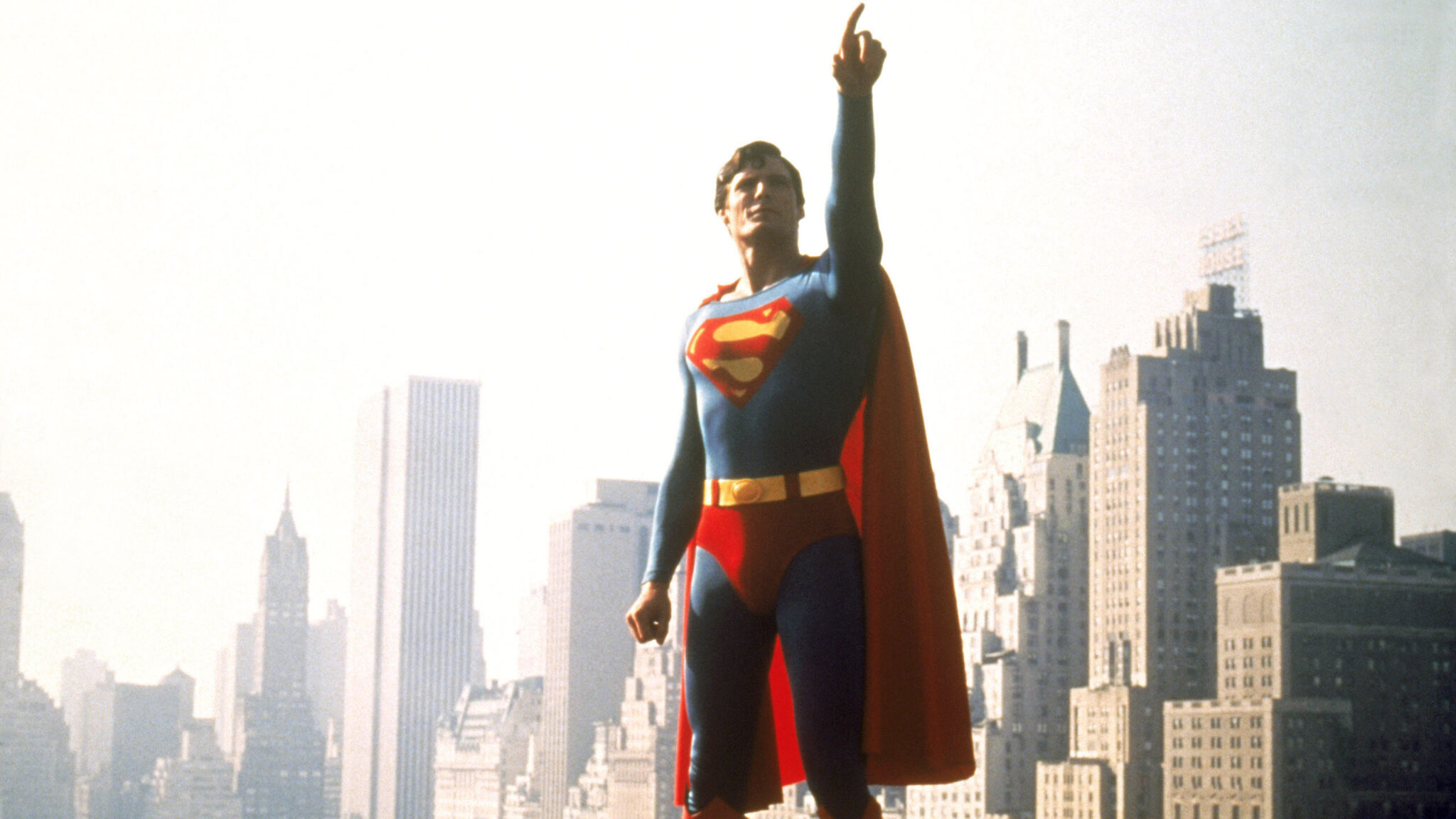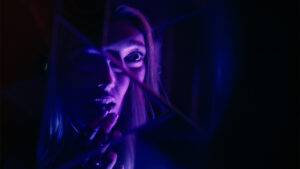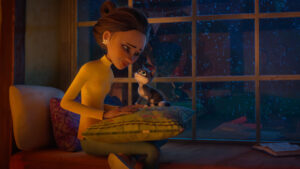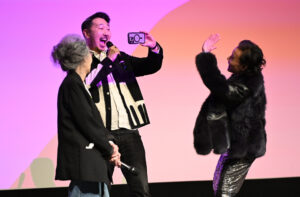By Bailey Pennick
One of the most exciting things about the Sundance Film Festival is having a front-row seat for the bright future of independent filmmaking. While we can learn a lot about the filmmakers from the 2024 Sundance Film Festival through the art that these storytellers share with us, there’s always more we can learn about them as people. This year, we decided to get to the bottom of those artistic wells with our ongoing series: Give Me the Backstory!
“I love that as a filmmaker, whether it’s fiction or nonfiction, you’re creating or revealing a world,” says Peter Ettedgui, discussing the importance of filmmaking. “You’re building an immersive experience.” With Super/Man: The Christopher Reeve Story, the storyteller’s latest collaboration with fellow writer-director Ian Bonhôte, the pair invite the viewer into the world and life of the late Christopher Reeve.
While his turn as Superman might be the first thing that comes to mind when hearing his name, Reeve was a complex figure on and off screen. His acting career is full of rich characters, and his work as a disability rights activist — after a horseback riding accident left him paralyzed from the neck down — kick-started a foundation, a rise in spinal cord injury research, and more. Super/Man invites audiences into this mosaic of a life with the care and detail that Ettedgui and Bonhôte’s nonfiction projects are known for — including 2018’s McQueen and 2020’s Rising Phoenix.
“We think of films as ‘empathy machines,’” Ettedgui continues, touching on his and Bonhôte’s creative process. “It is amazing how much you, as a filmmaker, can touch other people through the stories you project on a screen. And how much a story can affect someone, show them the world in a different way, make them feel for the characters you portray, change their hearts or minds or vision of the world we share.”
Below read more about the partnership of Ettedgui and Bonhôte, the production of Super/Man, which debuted in the Premieres section at the 2024 Sundance Film Festival, and the power of good editing.
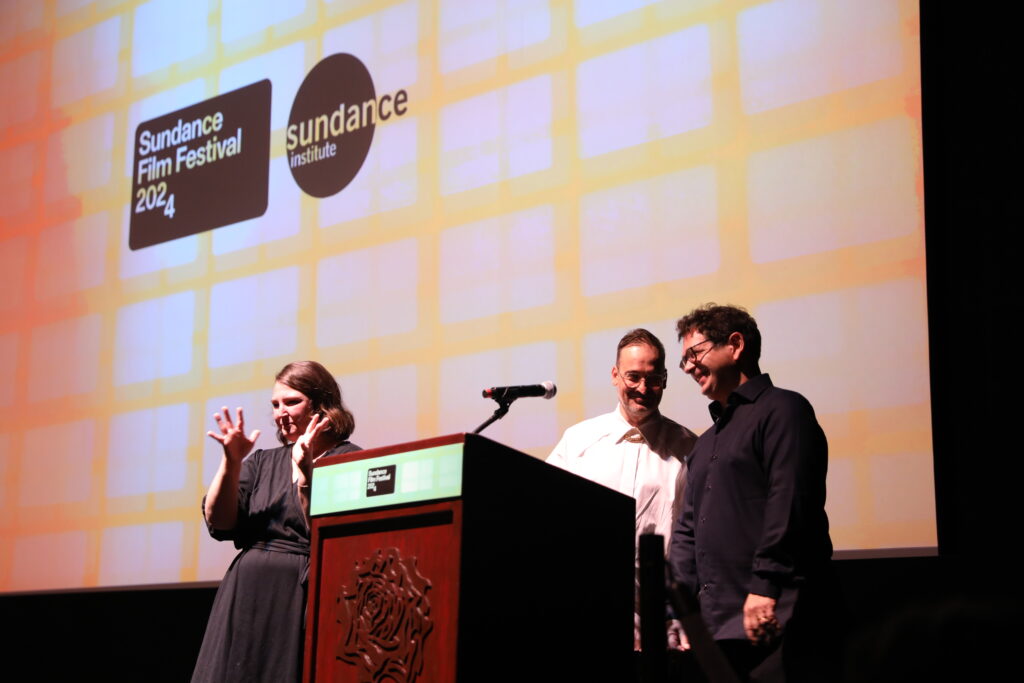
Tell us why and how you got into filmmaking?
Peter Ettedgui: Growing up I just loved the feeling of going to the cinema from a very young age. That feeling when the lights went down and curtains parted, and then being drawn into a new story, a new world, emotions I’d never felt before. I was just addicted to the whole experience, so I felt naturally drawn to work in film.
Ian Bonhôte: For me it was watching Louis Malle’s film Au revoir les enfants. I came out and I knew I wasn’t going to do anything else. When you watch that, you laugh, cry, and are inspired. It’s the performance aspect. I was a child actor from the age of 7, but when I discovered how many of the elements happen behind the camera, I became more interested in that. I have ADHD, and it’s probably why it suits me — there are so many things to cover and that’s where I feel myself. I love that there is a new challenge every day. As a filmmaker, you can craft your path. It’s not an easy one, but It’s just perfect for who I am.
What was the biggest inspiration behind this film?
Ettedgui: Growing up, Superman was my favorite superhero. I remember, at 4 years old, I even made my dad draw me a Superman badge; it was my pride and joy. When I saw Christopher playing Superman, I totally fell in love with the films. I grew up seeing him in the public eye, and I vividly remember the breaking news that he had fallen and would never move again. I followed his story in subsequent years and was so inspired by the fact that he remained such a major figure despite being quadriplegic. The story immediately grabbed me.
Bonhôte: I wasn’t such a fan of Superman; I was a Star Wars kid! I must admit. In my background as a visual director, I felt the tights and everything were a bit cheesy, but always thought that the way Christopher Reeve embodied Clark Kent was such a strong acting performance. I’m interested more in the impact of certain characters and films on pop culture, that is what made this story tempting. Then you add in the journey after the accident; being so close to death, but rising up, it was extremely inspiring and emotional.
We met Christopher Reeve’s children early in the project and absolutely fell in love with them. The apple really doesn’t fall far from the tree — these three individuals were fantastic people with so much depth, empathy, and charisma. After watching all the archive of Christopher, we felt like we saw elements of him in all three of his children, and we were able to work with them intimately to bring the story of their late father to life. They were fantastic from the moment we met them.
Ettedgui: It’s true, we walked away from our first meeting with them and said they seem to each embody different aspects of Christopher. There is Matthew, who is the filmmaker with a reflective, poetic soul. Then you have Alexandra, who is the campaigner; she is doing great things in Washington, D.C. Finally, there is Will, who looks so much like his dad. He works as a news reporter, just like Clark Kent! You put the three of them together as a composite and in a way you have Christopher Reeve.
Bonhôte: Having directed the McQueen biopic about the fashion designer Alexander McQueen, and then Rising Phoenix which follows the history of the Paralympic movement, we felt well-equipped to tell this story. We understood the biopic element and were excited to explore an iconic character within American culture who was an extremely strong advocate for disabled rights.
Ettedgui: When we made Rising Phoenix, we saw footage of Christopher at the Atlanta Paralympics. In a way, it was like the idea of a biopic and disability rights coming together in the story of one man’s life.
What was a big challenge you faced while making Super/Man?
Ettedgui: For me, it was getting the narrative structure to work. Finding a way to tell the story that was not just linear or episodic.
Bonhôte: That is the magic of modern-day editing. We were able to change the structure around quite a lot and try out different options. That’s why it takes so long, and why you need a great team, archive, and visuals, because it will take you a ton to get to the final product. It’s not like a fiction film where a lot of the jigsaw puzzle elements are solved at the script stage. Here, it all happens in the edit.
Ettedgui: There were lots of moments where you’re thinking, ‘How on earth do we put this together? How are we going to make this work?’ But then it clicks, and you think, ‘Wow, we’ve got something.’ It is unbelievably exciting. It’s fantastic to watch an editor like Otto Burnham, who is also credited as a co-writer with Ian on the film. His craft is something quite magical and amazing to observe.
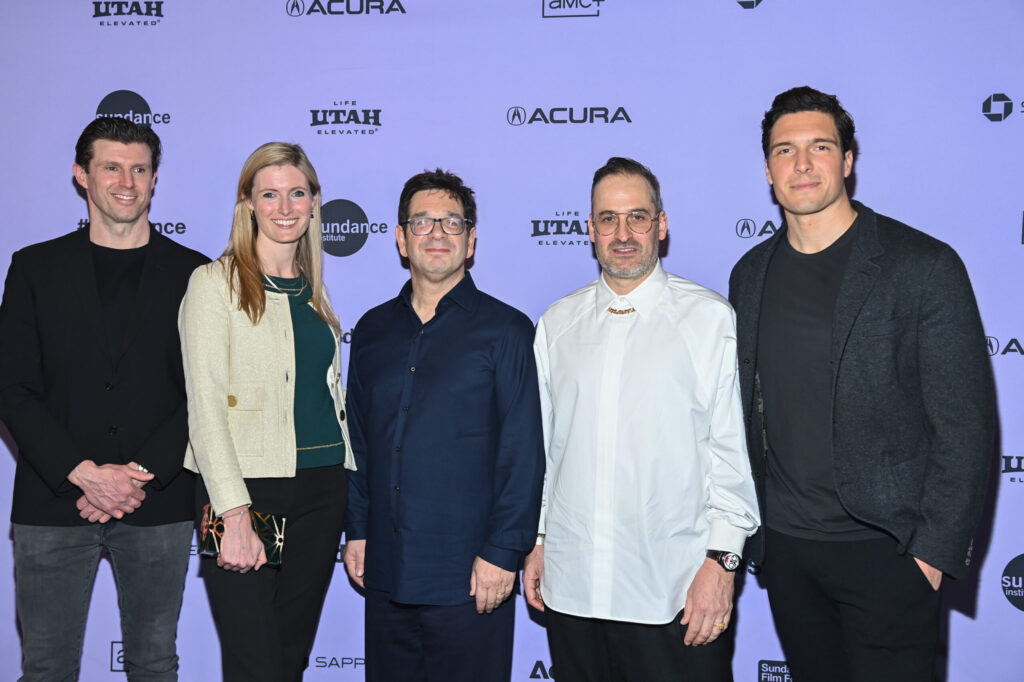
Why does this story need to be told now?
Bonhôte: Simply, inclusion. Disability is still one of the least represented communities on our screens. We are making steps and advances forward, but there is still a long way to go. What I think is amazing is that the scientific elements that Christopher was championing have improved the lives of those with C-1 or C-2 spinal cord injuries massively. He raised money and awareness in society, and it’s even had a positive effect on other diseases such as Alzheimer’s, ALS, and different forms of cancer. I think it is so kick-ass; Christopher was pushing these things forward years ago and was part of the early conversations.
Ettedgui: One of the other things that seizes me about this story is the idea of heroism. Obviously, there is the superhero thing, which is a huge part of recent cinema — Chris was the original, and probably the best. But he came to resent being identified with the role of Superman and having to serve a “heroic” example to others, when he was keenly aware of his own very human flaws… He kept trying to escape the cape both on and off screen. But then he had his accident, and he realized he could harness his reputation as Superman to help fund medical research through his foundation, while at the same time funding initiatives to improve the lives of disabled people all over the world. And for this, he became a true hero in life as well as on screen. We loved riffing on these notions of what makes a hero in the film.
What is something that all filmmakers should keep in mind in order to become better cinematic storytellers?
Ettedgui: We are not simply making films for ourselves. We are creating and crafting an experience for an audience.
Bonhôte: For me, it is all about the emotional journey you create for the audience that is so important.
One thing people don’t know about me is _____.
Bonhôte: I was a child actor in Switzerland, and Peter was the vice president of the James Bond Fan Club when he was 14 years old! Peter and I talk way too much and are total open books, there really are no secrets.
Early bird or night owl?
Bonhôte: I am a night owl and Peter is an early bird, that is how we can work 20-hour days!
Tell us about your history with Sundance Institute. When was the first time you engaged with us? Why did you want your film to premiere with us?
Ettedgui: My first Sundance [Festival] was in 2015 with a film I produced called Kinky Boots. I had been to a few other film festivals before that, but this one blew my mind because there was a great feeling of community. It was a collective celebration of filmmakers, and it was amazing to talk to people about how they had got there, compare the struggles of making a film, and see some incredible work. There is something very strong about indie spirit and community that is promoted in the small town. Internally, it makes people come together — it is about filmmaking and celebrating every aspect of that.
Luckily enough, I got to go back twice more with two other films I produced — Listen to Me Marlon and [Unmade Beds]. Every experience has been a complete delight, despite hating the snow! There have been wonderful discoveries, and the people you meet everywhere are unique and open. Oh, and I love the merch!




